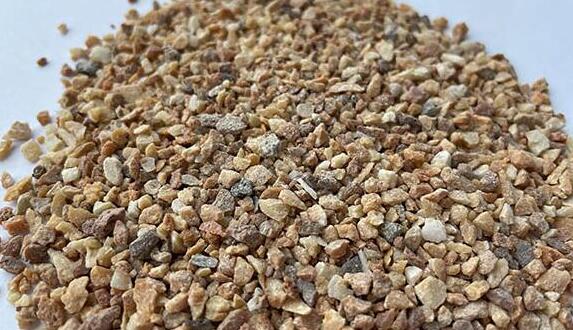In the field of refractories, materials that can withstand extremely high temperatures and harsh conditions are crucial for the success of various industrial processes. One such material that has gained significant importance in the refractory industry is Dead Burned Magnesium Oxide (DBM). DBM, also known as sintered magnesia, is a highly refractory material that exhibits exceptional properties and offers a wide range of applications. In this article, we will delve into the superior properties and diverse uses of DBM in refractory applications.
DBM is widely recognized for its exceptional high-temperature performance. It has a high melting point of approximately 2800°C (5072°F), making it suitable for use in extreme heat environments. DBM's superior refractory properties enable it to withstand the intense heat encountered in applications such as steelmaking, cement production, glass manufacturing, and non-ferrous metal processing.
One of the key advantages of DBM is its excellent thermal shock resistance. When exposed to rapid temperature changes, DBM can endure without cracking or spalling. This property is vital in refractory linings, where sudden temperature fluctuations occur, such as in steel ladles or glass furnaces. DBM's ability to handle thermal shocks ensures the longevity and reliability of refractory structures, minimizing downtime and improving operational efficiency.

DBM exhibits high chemical stability, making it resistant to the corrosive effects of various chemicals, including alkaline substances and molten slags. This property is essential in industries such as steelmaking, where DBM is used to line furnaces and converters exposed to aggressive environments. The chemical stability of DBM ensures the integrity of refractory linings, preventing degradation and maintaining the desired metallurgical processes.
DBM is known for its low impurity content, which is a critical factor in refractory applications. The presence of impurities can lead to undesired reactions, compromised performance, and reduced refractory life. DBM's low impurity content ensures high purity and reliability, allowing it to meet the strict requirements of industries where refractory materials play a vital role.
DBM finds extensive applications in various industries due to its exceptional properties. In steelmaking, it is used in basic oxygen furnaces, electric arc furnaces, ladles, and tundishes. In cement production, DBM is employed in the construction of rotary kilns and cement kiln linings. Glass manufacturing utilizes DBM for glass tank regenerators, refractory bricks, and checker bricks. DBM is also utilized in non-ferrous metal processing, where it is used in furnaces for aluminum, copper, and nickel production.
DBM plays a significant role in the production of monolithic refractories. Monolithic refractories are heat-resistant materials that can be shaped and applied in a variety of ways, such as castable refractories, gunning mixes, and ramming mixes. DBM serves as a key component in these monolithic formulations, providing excellent high-temperature performance, thermal shock resistance, and chemical stability.
In conclusion, Dead Burned Magnesium Oxide (DBM) is a highly sought-after material in the refractory industry, offering exceptional properties that are vital for withstanding extreme temperatures and harsh conditions. Its excellent high-temperature performance, thermal shock resistance, chemical stability, low impurity content, and versatile applications make DBM an ideal choice for various refractory applications in industries. We are a dead burnt magnesite supplier. If you are interested in our products, please contact us now!
Copyright:@2020-2021
Comments Please sign in or sign up to post.
0
0 of 500 characters used